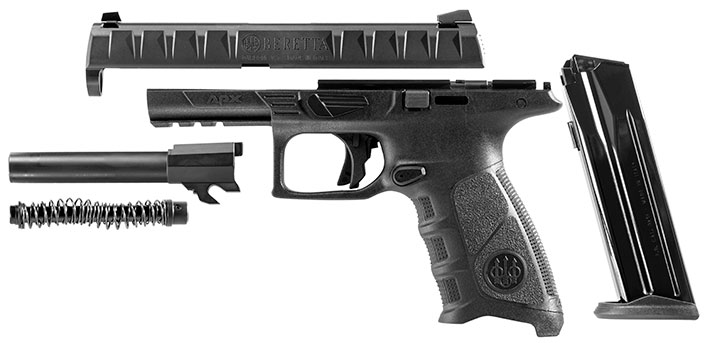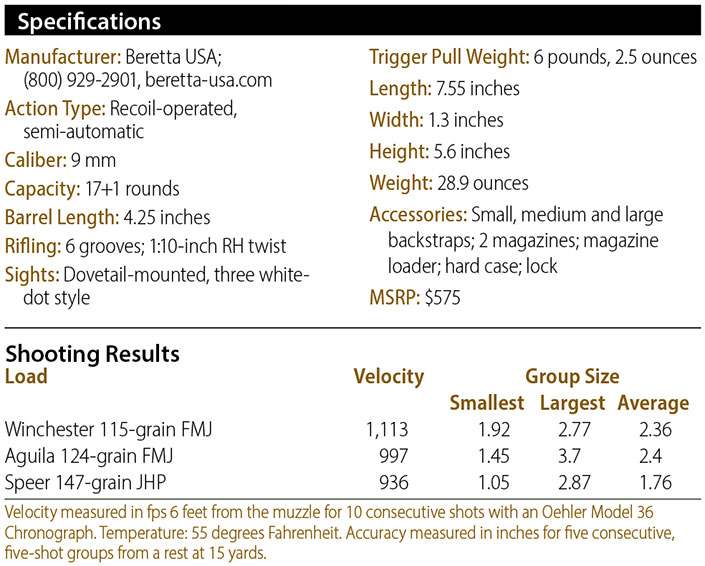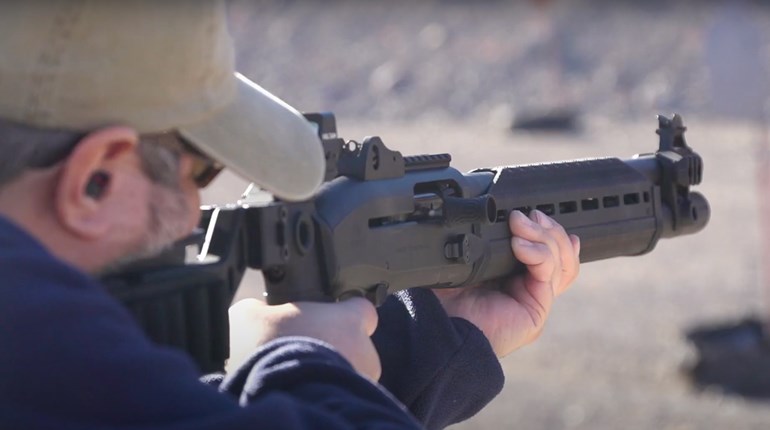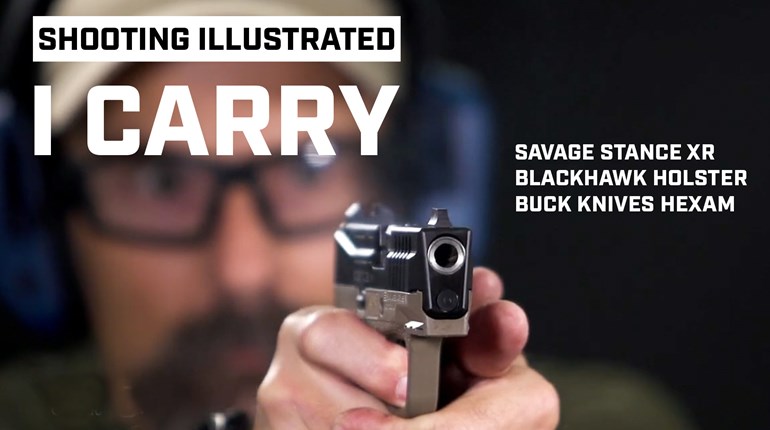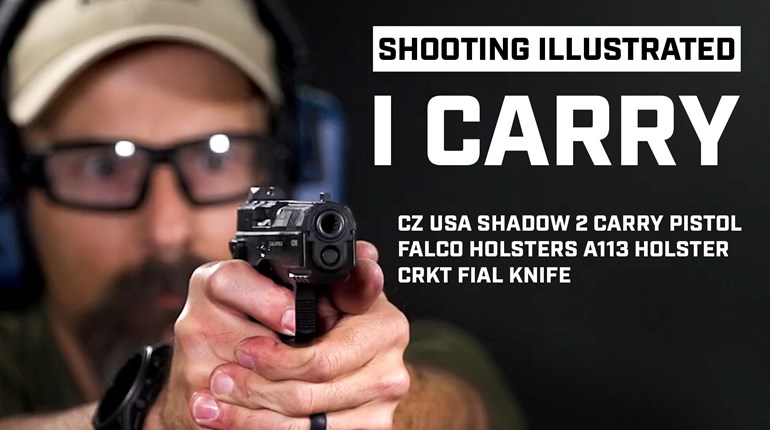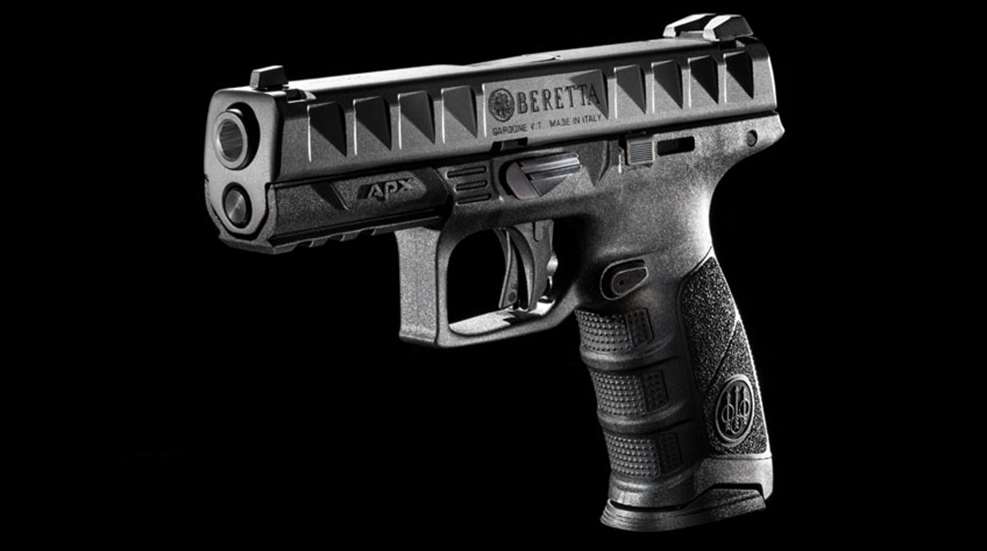
News of the Beretta APX, a full-size, striker-fired, polymer-frame pistol, took some by surprise, but the handgun has been in development for quite some time. The manufacturer best-known for the double-action/single-action (DA/SA) Model 92, star of 1980s action-movie staples like “Lethal Weapon” and “Die Hard,” has rolled the dice on the APX, opting to break into the full-size, striker-fired market in a big way. While the company’s polymer-frame, striker-fired Pico and Nano subcompact pistols have been available for a while, the mainstay has always been the DA/SA Model 92 and its military sibling, designated the M9.

Reaction has been somewhat mixed to the introduction of the Beretta APX. Some have wondered why the manufacturer has decided, seemingly out of the blue, to break with its tradition of DA/SA semi-automatics, which includes the Px4 Storm line. Others aren’t fans of the unconventional design—the prominent slide serrations are a “love it or hate it” kind of thing. One thing is apparent, though: Beretta did its homework when researching the APX’s target audience.
A common misconception around the Beretta APX involves the U.S. Army’s Modular Handgun System (MHS) program for choosing a new handgun for our Soldiers (which was ultimately won by SIG Sauer’s P320). Because the APX’s development occurred during the original phase of the MHS project, it was assumed that the pistol was developed in response to the MHS program. Well, the APX had been on the drawing board before that process began, but make no mistake: The APX was designed with the law enforcement and military communities in mind.
A phrase that pops up repeatedly in discussion with Beretta’s engineers is “extreme duty use.” John Tamborino, tactical products manager for Beretta, pointed out that the APX’s prime duty was to work every time, under every condition possible, for people in harm’s way. Police, military and civilians who carry concealed alike can benefit from the “function over form” design of the Beretta APX. While Beretta obviously recognizes that aesthetics are important in a firearm, for the APX, making sure it works every single time no matter what the task was the be-all, end-all purpose.
Tamborino stated, “Our intent during the development of the APX was to develop the pistol for duty use. Form was secondary to function as we integrated user needs into the pistol based on research conducted with Military, law enforcement, and citizens.”
When talking with Tamborino, another aspect quite apparent in the design of the Beretta APX is the legwork that went into gathering information before the pistol even began. Literally years of crisscrossing the country, talking to hundreds of law enforcement and military members—from beat cops and front-line grunts to SWAT team members and Spec Ops door kickers—intel was plentiful and varied. What various operators liked, didn’t like, found useful, wished they had available; all information was collected, disseminated and studied. The APX project was based around one overarching question: “What does the user need?”

So, what sets the Beretta APX apart from what is an ever-increasing crowd of polymer, striker-fired pistols? The aforementioned slide serrations are the most visible, of course. However, the differentiation doesn’t end there. It’s obvious from even a cursory look at the APX that ergonomics are key: Some companies offer a multitude of backstraps and even side panels to custom fit the owner’s hand; others offer different frame sizes and configurations to achieve that goal. In the case of the APX, it’s both: three backstrap sizes are available, and while only a full-size frame is currently released, Beretta has plans for other options in the coming months and years.
Naturally, the removable fire-control group (FCG) sets the Beretta APX apart from most competitors as well. Introduced with the SIG Sauer P250, the concept of an integral FCG that comprised the actual firearm was a quiet game-changer. Even now, the concept isn’t really recognized as revolutionary, with the argument that “I’ll just buy another gun” offered to counter the modularity of the removable FCG. While the ability to change calibers isn’t exactly new, being able to change frame size at the same time is—and it’s astounding that the implications of this ability haven’t been better explored.
On a side note, the engineering that goes into swapping out the frames is, well, interesting. It requires the pistol to be fieldstripped. Check. No problem. One then needs to remove the takedown lever. Check. Also no problem. Next, one needs to simultaneously pry a small spring out of the way, push a pin through the frame and then depress the striker-deactivation button (more on this later). Once this has been done, the FCG lifts out of the frame and is ready to be swapped into another. It’s not a terribly difficult procedure, and once you’ve done it once or twice it becomes old hat, but it is decidedly not intuitive at the get-go.

But, I digress while talking about the modular nature of the Beretta APX. Now, I understand. When the frame/slide/barrel/etc. costs $400 and a new gun is $500, it doesn’t make a lot of sense to buy all the accoutrements rather than just a second pistol. Believe me, as an AR-15 owner who fully recognizes that you can get by quite well with two or three lowers and a bunch of purpose-built uppers, I understand the idea of “but I could have another gun instead…” Overlooked, however, is the ability to improve one FCG and be able to spread that across multiple options.
Repeated dry-fire practice will smooth out most triggers; that’s pretty much a given. I’ve got a Smith & Wesson Airweight J-frame that has, by my unscientific count, several gazillion trigger pulls from countless nights spent pulling the trigger in an attempt to shoot the “Snubbie from Hell” better. When I stopped carrying it, I left the J-frame as a backup to my backup and more or less forgot about it. Picking it up a few years later, I had forgotten how nice the double-action trigger pull was as a result of that work. If I were able to swap that FCG into another revolver—like an eight-shot N-frame for home defense—how cool would that be?
Alternately, a good gunsmith can make pretty much any trigger better. So, you pick up the new Blastomatic 2000, ship it off to the ’smith, and when it comes back, it’s like a new pistol. The trigger is lighter, smoother and makes accurate hits with less effort. Win-win, right? Why wouldn’t you want to be able to take that buttery-smooth trigger and drop it into a subcompact frame for concealed carry, or a full-size for training, or… It just makes sense if you’re thinking about making improvements to your pistol.
Interestingly enough, the trigger on the Beretta APX itself is pretty darn good right out of the box. I attended a Beretta Tactical event earlier this year when the APX was introduced, and we were given the opportunity to test it in various “real-life” scenarios with instruction from EAG Tactical (now Forge Tactical) trainers. Weak-hand-only, strong-hand-only, low-light, no-light and other scenarios were played out with the APX, and it repeatedly proved itself up to the task. In a group in excess of a dozen seasoned gunwriters and editors, nearly 5,000 rounds of plain-Jane bulk 9 mm ammunition was chewed up by the various APXs, and the only glitches experienced were a small number (able to be counted on one hand) of times where the slide didn’t go fully into battery on the first round. Given the novelty of the heavily textured slide—there’s that love-it-or-hate-it again—it was theorized the glitches were operator-induced (one of the writers who experienced the failure admitted he may have been overzealous in his overhand slingshot of the slide, which is not recommended with the APX).
Back to the subtle differences in the Beretta APX, one feature will appeal to the safety-conscious: the striker-deactivation button. Some striker-fired pistols require the trigger to be pulled as part of the firearm’s takedown procedure, which can lead to very loud things happening if all safety rules aren’t obeyed. Now, I’m a big fan of following the same routine over and over, and I get a little obsessive about safety, so this hasn’t been an issue for me—yes, I insist on an ammo-free area for both cleaning and dry-firing.

If you’re of the type who dislikes pulling the trigger to take a handgun apart, the Beretta APX is a handy choice. If you’re not, though, you can certainly disassemble the pistol traditionally: First and foremost, check and double-check to ensure it is unloaded, then drop the magazine and lock the slide to the rear. Turn the takedown lever 90 degrees and release the slide, pulling the trigger as the slide releases. Make sure you’ve got a spot for the slide to go, though, because it’ll come off the frame quick. Remove the captured guide rod and barrel, and voila! Ready to start scrubbing.
The functional component of the Beretta APX was readily apparent on the range. On the first day, right out of the box, 440 rounds went through the APX with zero malfunctions. We chose a variety of bullet weights and profiles, opting for the most-common combinations of 115- and 124-grain full-metal-jacket bullets folks are most likely to use for practice as well as 115-, 124- and 147-grain JHPs suitable for defensive use. Nothing stopped the APX or even slowed it down.
In fact, the single glitch experienced with the Beretta APX occurred on a subsequent function-test range trip. We gathered up in excess of 700 rounds of ammunition from 80-grain PolyCase ARX to 147-grain Browning FMJ and even an old box of lacquered, steel-case ammunition of questionable origin in an attempt to get the APX to hiccup. Note, at no time was the pistol cleaned or even lubricated from the previous range trip. Around round 750, enough fouling had accumulated in the frame that the trigger was resetting more sluggishly than we would like for rapid-fire exercises. One spritz of oil and we were back in business; it’s hard to call this a failure given the lack of anything resembling lubrication at any other time in this test. Overall, in excess of 1,200 rounds were fired through the APX, with precisely zero failures to feed, fire or extract a dozen different types of ammo.
It’s also important to recognize that the current Beretta APX pistol is only the first in what Beretta expects to be a full product line. Offered in 9 mm and .40 S&W initially, more calibers—including .45 ACP—are expected to become available, along with new frame/slide/barrel variations as well. It defies credulity to think Beretta won’t capitalize on this modularity to launch a complete series of compact and sub-compact variants to complement the full-size frame. The company plans on a compact version to become available in 2018, and hinted that a version compatible with a micro red-dot sight is also in the works.
So, you’ve got a pistol that has a decent trigger out of the box, has a variety of backstraps and frame color options, is easy to maintain and has been engineered for years of hard (ab)use. What, exactly, is not to like about that? Does it boil down to the aesthetics? If you’re letting the unconventional look of the slide serrations stop you from checking out the Beretta APX, don’t. Give it a look anyway. Take it to the range and shoot it. You’ll come away impressed.
